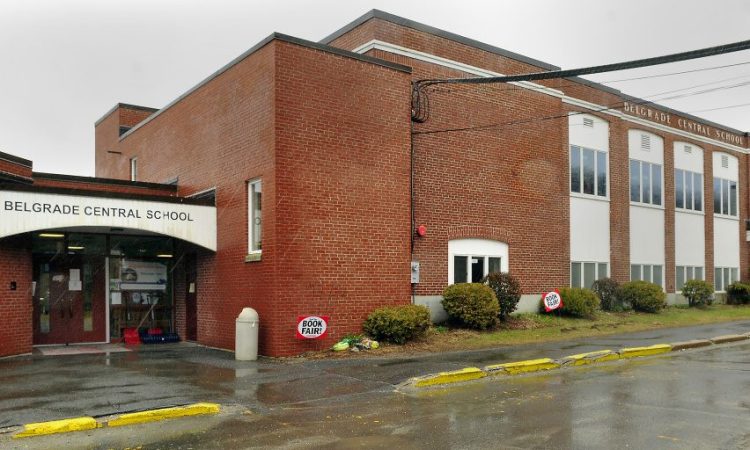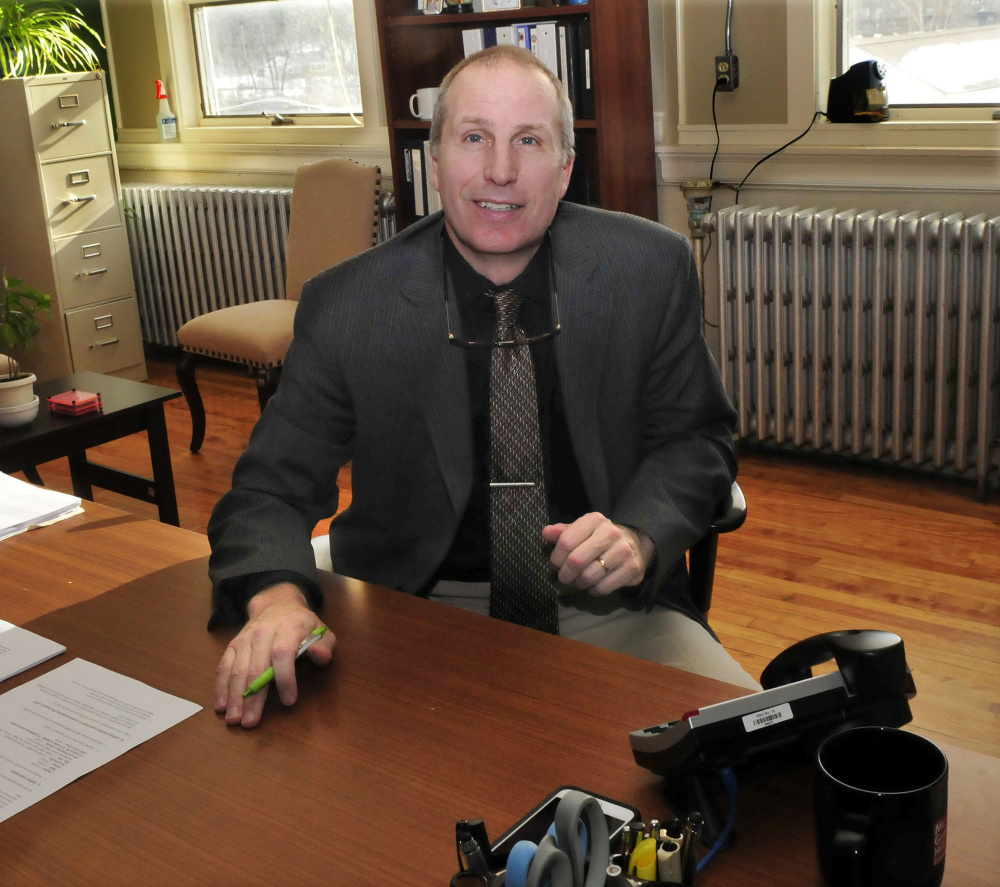An Oakland-based school district is facing a five-year deadline and millions of dollars in costs to correct dozens of fire code violations.
Regional School Unit 18 received a report from the Office of the State Fire Marshal in June listing 104 items the district needed to address to meet the state’s fire code. Only Messalonskee Middle School, the newest building in the district, which includes Oakland, China, Sidney, Rome and Belgrade, passed with few deficiencies.
While some of the deficiencies can be covered with funds from the state’s School Revolving Renovation Fund, others would require additional funds from the district in the form of a bond. At the same time, the district must weigh in the balance a $3.9 million proposal to renovate the Messalonskee High School athletic complex.
At its July meeting the school board voted to have Superintendent Carl Gartley create a five-year capital plan that would address the district’s needs as well as the proposal to renovate the athletic complex within the five-year window the district has to bring the school buildings up to state fire standards. Prioritizing needed facilities upgrades, fire safety work and the renovation of the high school’s track and playing fields will be a topic of the board’s next meeting Aug. 9.
FIRE SAFETY REPORT
Richard McCarthy lives in Oakland, is a parent and sits on the school district’s facilities committee. He’s also the state assistant fire marshal heading up the prevention division. The members of the facilities committee asked him to inspect the district’s 11 buildings and report on his findings, and he told them if he were to do so it would be in his capacity as assistant fire marshal.
Nothing in the list of 104 items is an imminent threat to students’ safety and any immediate dangers have been remedied, McCarthy said recently, but what he found were a number of “housekeeping items” and other issues such as incomplete sprinkler coverage that are not “uncommon.”
In response to the report, the district submitted a corrective action plan to the state in June indicating multiple buildings needed sprinkler systems, automatically closing doors and additional exits. A number of fire exits were also blocked by snow or ice at the time of inspection, and some schools had “excessive” storage in unsafe areas like hallways. The district also has to install fire-rated Sheetrock in a number of walls and corridors, which keeps the areas safe from fire for a certain period of time. It could also install sprinklers in those areas if it’s cheaper.
SETTING PRIORITIES
McCarthy and Gartley both said that a five-year plan should work, as long as budgets continue to pass in the district. The schools have fallen into disrepair after years of tight budgets, Gartley said, as maintenance items such as roof replacements got pushed out from 10 years to 13 or 14 years.
The athletic proposal raised questions among residents, town officials and board members about whether the district should tackle the project before addressing its facility problems.
As board member Karen Hatch Gagne said at the July meeting, if the district were to take out the proposed $3.9 million bond for only the track project, “we can kiss another bond goodbye for at least another decade.”
Gartley said in an interview he hasn’t heard anyone say the track and field proposal is a bad idea, but he thinks talking about the other facility needs in the district is reasonable. The district could take out one larger bond to cover all of its projects.
“We have science classrooms that really do need renovation,” he said. “We have a front entrance at Belgrade Central that is, in my opinion, a safety concern. I don’t think it has to get into which one is more important. I think the issue is … let’s consider taking a look at the bigger picture.”
Some of the projects will be covered by bonds from the state’s School Revolving Renovation Fund, which forgives about 44 percent of the loan and allows the district to pay back the rest with no interest, including $255,000 this year combined with $340,000 the district received last year to cover several projects.
China Middle School will get a new roof and the Atwood Primary School will get a sprinkler system. At China Primary School, the carpets in the gym will be removed and fire panels will be installed. Asbestos will also be removed from Belgrade Central School.
FIRE SAFETY INSPECTIONS
McCarthy said there is no statewide regulation in Maine to keep schools operating up to the fire code, so he couldn’t compare RSU 18 with other districts. The state fire marshal’s office only inspects schools if it gets a request, or if there is a licensed entity within the school, like a day care.
“I think there is a fear of the unknown,” he said. “We’re generally not invited.”
Otherwise, schools are usually inspected by their insurance companies or possibly a local fire chief.
When asked what he thought of the lack of regulation, McCarthy said, “That’s a policy decision that’s not mine to make” and declined to comment further.
Maine isn’t alone in its lack of enforcement, according to Robert Solomon, a fire protection engineer for the National Fire Protection Association in Quincy, Massachusetts. Even though 38 states, including Maine, have adopted the association’s Life Safety Code, some states are more stringent while others follow similar practices.
Some school systems set high standards, Solomon said. Jurisdictions in Maryland and Florida employ a fire protection engineer to regularly inspect buildings and monitor construction work, for instance.
“There’s no strict rule,” Solomon said.
In an “ideal world,” Solomon said the association would like schools to get inspected at least once per year, around this time, so that districts would know if construction work had impacted exits, sprinklers or other fire safety components.
“While we think it’s ideal to have those inspections, we also know, realistically, it’s difficult,” he said, because resources vary according to each area’s assets.
If a district doesn’t keep a capital planning budget for the necessary maintenance of fire safety systems, such as sprinklers, Solomon said they will end up with a long list of deficiencies such as RSU 18 received from the state fire marshal’s office.
SIMPLE MEASURES STILL COUNT
Despite the lack of cohesive regulation across the nation and in some states, Solomon said it’s been decades since the last major school fire that took lives.
In 1958, three nuns and 92 students died when Our Lady of the Angels School in Chicago was set on fire. An investigation by the association found that the building failed to meet a number of standards, including having adequate exits for the number of people in the school, enclosed stairways to prevent the spread of fire and automated fire alarms.
“It was one of those significant moments where people started to change codes and look at the codes that were already there,” Solomon said. “We have been … doing the right thing now, and we haven’t seen a catastrophe or anything like that that took lives.”
Two reasons for that are two association codes that are easy and economical for schools to follow on their own. One requires teachers, administrators or staff to inspect all building exits daily.
“It puts that level of compliance back on the school on a daily basis rather than relying on others to point those out,” Solomon said.
The other mandates regular fire drills in schools, which reminds everyone to stay vigilant on the issue.
Madeline St. Amour — 861-9239
mstamour@centralmaine.com
Twitter: @madelinestamour
Copy the Story LinkSend questions/comments to the editors.





Success. Please wait for the page to reload. If the page does not reload within 5 seconds, please refresh the page.
Enter your email and password to access comments.
Hi, to comment on stories you must . This profile is in addition to your subscription and website login.
Already have a commenting profile? .
Invalid username/password.
Please check your email to confirm and complete your registration.
Only subscribers are eligible to post comments. Please subscribe or login first for digital access. Here’s why.
Use the form below to reset your password. When you've submitted your account email, we will send an email with a reset code.